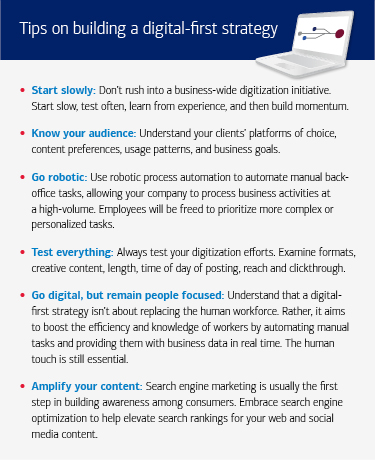For medium-size companies, adopting a “digital first” mindset has become critical to business success. Vendors, customers and employees expect frictionless digital interactions with companies. Companies that can’t make that transition are at risk of falling behind.
That’s why many medium-size businesses are boosting investments in digital transformation, according to the 2023 Mid-Sized Business Owner (MSBO) Report, a study conducted by Bank of America and Ipsos. Their research found that 90% of mid-size businesses have adopted digital strategies to optimize their business and operations over the past 12 months. Using digital tools can help you save time, increase customer satisfaction, manage cash flow and more.
Digitization can be daunting, particularly for businesses with annual revenues of $50 million or less. Yet, most business owners have adopted digital strategies to modernize their businesses. Is this something you want to explore in the next year? Such an endeavor can involve interconnected technologies and capabilities that include digital payments, cash-flow monitoring, data analytics, social media and search engine optimization (SEO). To be successful, these digital assets must be seamlessly integrated across the company.
At the same time, a digital-first business model can level the playing field for companies that lack the enormous resources or large, highly trained staff of a big enterprise. While these benefits can be gamechangers, companies needn’t rush into a business-wide digitization initiative. It’s best to start slow, test and learn from experience, and build momentum. “It requires a crawl, walk, run approach,” said Joe Corriero, Senior Digital Marketing executive for Business at Bank of America. “You should go slowly, try a lot of things based on your knowledge of the business and your customers and test to see what works.” Here are key areas to focus on:





